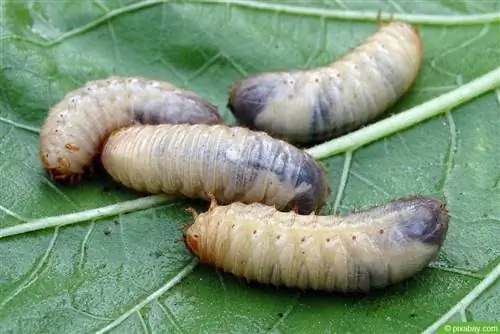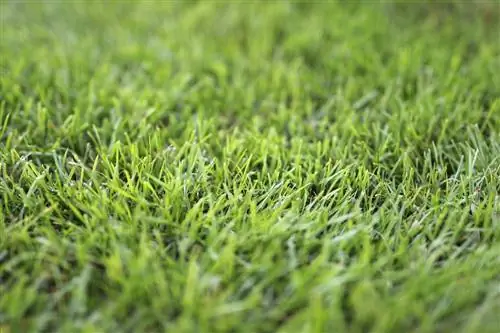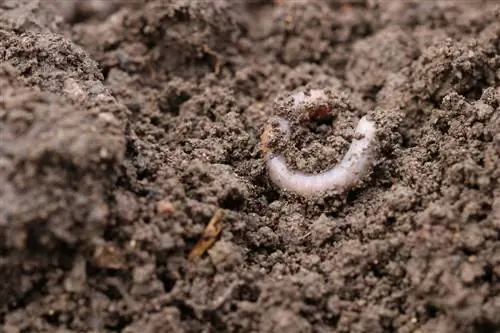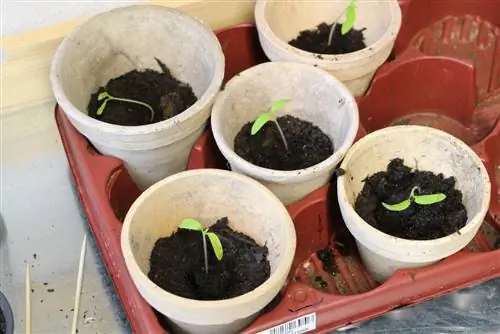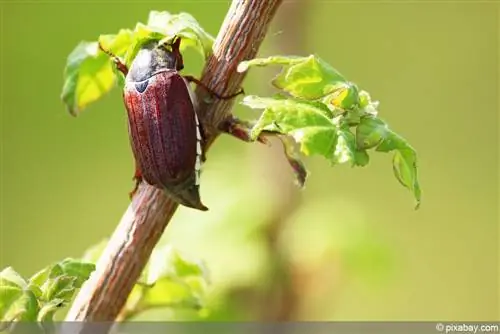- Author admin [email protected].
- Public 2023-12-17 03:39.
- Last modified 2025-01-24 12:45.
Countless small creatures cavort in the garden soil. Some of the species are very similar to each other. Hardly anyone knows straight away what they will uncover when digging. It is important to keep beneficial insects and pests apart. As is often the case, the difference lies in the details. Rose beetle larvae, for example, can easily be confused with other grubs. How can they be clearly identified?
The Shiny Rose Beetle
The beautiful rose beetle from the scarab beetle family can be seen buzzing and fluttering in the garden from April to October. In this country it is the common rose beetle, known as Cetonia aurata. The insect flies to many flowering plants and feeds on their nectar and pollen. He seems to be particularly fond of rose petals, which is reflected in the name.
- can be spotted especially on warm days
- usually around lunchtime
- loves rose petals and umbelliferous plants
- the beetle shines golden green on the top
- the underside is copper red
- it is approx. 14 to 20 mm long
The rose beetle larvae hatch from its laid eggs. Beetles and larvae do not cause much damage to our plants. On the contrary, as flower pollinators and humus producers, they are a valuable part of the ecosystem. In 2000, the rose beetle was even chosen as insect of the year.
Note:
Rose beetles are protected species and must not be killed. Anyone who suffers from a larger number can collect them and release them somewhere else.
Rose beetle larvae in compost
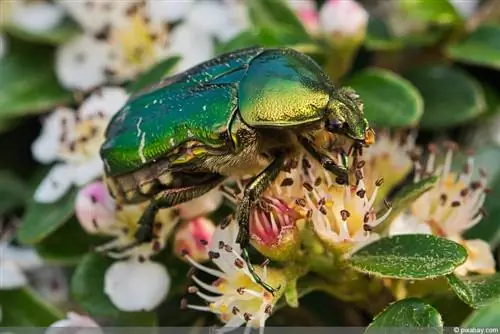
The rose beetle larvae live hidden in the soil. During their entire development period of two to three years, they do not come to the surface of the earth voluntarily. That's why we only meet them when we "enter" their area of life. In the wild, these larvae usually live in rotten remains of oak, poplar and willow trees. In the home garden, female rose beetles like to lay their eggs in the compost heap.
- Larvae feed on dead plant remains
- they are getting longer and thicker
- molts several times
- their excretions contribute to humus formation
- Pupated larvae can also be discovered
- even the beetle lives in it for some time after hatching
These hard-working beneficial insects initially remain invisible to us. Only when the compost heap is moved do small white maggots appear. However, this term is not correct in connection with rose beetle larvae. They are correctly referred to as grubs. Just like the larvae of other scarab beetle species. For example, those of the cockchafers, June beetles and rhinoceros beetles.
Appearance of the rose beetle larva
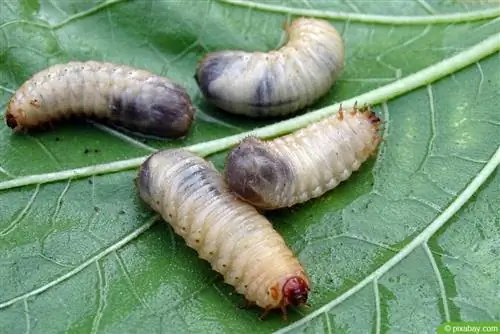
The scarab beetle larvae are similar. But there are some features that make it easy to distinguish between them. Large white larvae in compost usually come from rose beetles or rhinoceros beetles. Both species are beneficial insects because they feed on dead plant material. The two species are different, which is why you can easily recognize them. Here are the typical features you can use to identify a rose beetle larva:
- approx. 4 to 5 cm long
- white with a grayish shimmer
- brownish head capsule
- stocky physique
- lots of brown hairs
- the back end is thicker than the front part
- there are small reddish-brown dots on the sides
- three short, poorly developed pairs of sternums
- the larva is curved in a C shape
Danger of confusion with other larvae
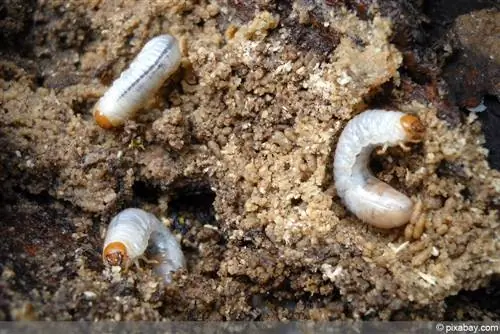
The larvae of rose beetles, cockchafers and June beetles are similar in appearance. But while rose beetles are beneficial insects, the other two species are pests. A tip will help you differentiate between them. Place the grub you find on a smooth surface and observe it. The rose beetle larva will straighten up and crawl away like a caterpillar. On her back with her legs sticking up. May beetle larvae and June beetle larvae, on the other hand, will bend over or lie on their stomachs in an attempt to get away. You can also recognize the pests because they are evenly thick all over their body.
Tip:
If you have identified white grubs as rose beetle larvae, cover them immediately with soil again. They are afraid of light. They dry out quickly in the sun and shrink.
Pupated larvae
In the compost you may also come across a rose beetle larva that has already pupated. Determining them is not difficult:
- the larva usually pupates in autumn
- the cocoon is egg-shaped
- about 2 cm long
- approx. 1 cm wide at the thickest point
- There is often a thin shell around the cocoon
- made of sand, earth and small pieces of wood
The beetle hatches two to three weeks after pupation. But it stays in the ground until spring.
Grubs in flower pots
You can encounter rose beetle larvae not only near dead plant material. Even when repotting a flower or digging in the garden soil, one or more specimens can occasionally appear. Therefore, you should take a closer look at the larvae and identify them based on their typical characteristics. While pests need to be destroyed, the otherwise useful rose beetle larvae should be relocated. It's good in the compost. Because if it lacks dead plant material, it will also nibble on living plant roots. This is the only way she can survive.
Tip:
Sift your compost before use. This means that the rose beetle grubs cannot get close to living plants. Instead, you can put them back in the compost heap where they can continue to do their valuable work.

